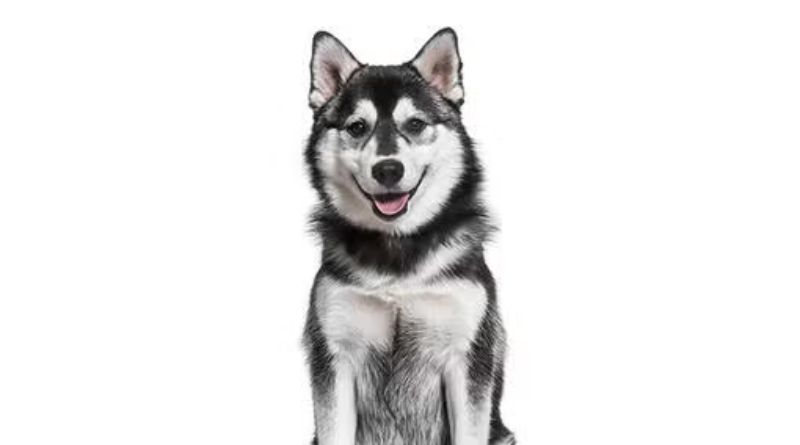The Labsky is an increasingly popular hybrid dog breed, known for its friendly temperament, intelligence, and athleticism. This energetic and affectionate dog is a cross between the Labrador Retriever and the Siberian Husky, two of the most beloved dog breeds in the world. Labskys inherit the best traits from both parents, making them ideal companions for active families or individuals who enjoy outdoor activities and exercise. In this article, we’ll explore what makes the Labsky such a great breed, including their appearance, temperament, care requirements, and more.
Table of Contents
What is a Labsky?
A Labsky is a mixed breed dog that results from the crossing of a Labrador Retriever and a Siberian Husky. While hybrid breeds like the Labsky can inherit traits from both parents, each individual dog may vary in terms of appearance, temperament, and behavior. The Labrador Retriever is known for its loyalty, trainability, and friendly nature, while the Siberian Husky is famous for its stunning appearance, intelligence, and strong-willed personality. When these two breeds are combined, they produce a dog that’s as loyal as a Lab and as independent and energetic as a Husky.
Appearance
The physical appearance of a Labsky can vary depending on the genetic makeup of each individual dog. However, there are some common features that many Labskys share:
- Size: Labskys are typically medium to large dogs, with an average weight of 40 to 70 pounds and a height of 21 to 25 inches at the shoulder.
- Coat: Labskys usually have a double coat, with the outer layer being thick and dense, while the undercoat is soft. Their coat colors can vary, but common colors include black, brown, gray, and a combination of these, often with markings like the Siberian Husky’s signature white fur on the face, chest, and paws.
- Eyes: One of the most striking features of the Labsky is its eyes, which can be blue, brown, or even one of each (a condition known as heterochromia). The eyes are often almond-shaped, giving the dog a captivating and expressive look.
- Ears: The ears are typically medium-sized, and they may be upright like a Husky’s or droop slightly like a Lab’s, depending on the individual dog.
Temperament and Personality
The temperament of a Labsky can be a delightful mix of the Labrador Retriever’s easy-going nature and the Siberian Husky’s playful independence. Here’s a breakdown of what you can expect from a Labsky:
- Friendly and Affectionate: Like both parent breeds, the Labsky is typically very friendly and loves being around people. They are known to be affectionate with family members and are generally good with children, making them excellent family pets.
- Energetic and Playful: Labskys inherit the high energy levels of both the Labrador and the Husky. They enjoy being active, whether it’s running, playing fetch, hiking, or even swimming. They’re not well-suited for owners who prefer a sedentary lifestyle. A Labsky needs plenty of physical and mental stimulation to stay happy.
- Intelligent and Independent: The Labsky is highly intelligent and can learn commands quickly. However, they also inherit the independent streak of the Husky, which means they may sometimes be stubborn or headstrong. Consistent training and positive reinforcement are essential to help them learn and behave well.
- Social and Outgoing: Labskys tend to be social dogs that enjoy meeting new people and other pets. They are often friendly with strangers, though their personality can vary depending on their socialization and upbringing. Early socialization is important to ensure they develop good social skills.
Training a Labsky
Due to their intelligence, Labskys can be relatively easy to train, but their independent nature, especially from the Husky side, can make them a bit stubborn at times. It’s important to be patient and consistent with training. Here are a few tips to help with training your Labsky:
- Start Early: Begin training your Labsky as soon as possible, ideally when they are a puppy. This will help establish good habits and prevent behavioral problems down the line.
- Use Positive Reinforcement: Labskys respond well to positive reinforcement, such as treats, praise, and toys. Reward them for good behavior to encourage them to repeat it.
- Socialization: Expose your Labsky to a variety of people, animals, and environments during their formative months. This will help them become well-rounded and adaptable.
- Be Patient: While Labskys are intelligent, they can be independent and stubborn. Consistency, patience, and positive reinforcement are key to successful training.
Exercise and Activity Needs
Labskys are high-energy dogs that require a lot of exercise to stay healthy and happy. Both the Labrador and the Husky are known for their stamina, so the Labsky will likely have similar needs. Daily exercise is a must to prevent boredom and destructive behavior.
- Daily Walks: Aim for at least 30 to 60 minutes of walking each day. Labskys love exploring new places, so a good walk or hike will keep them stimulated.
- Playtime: Labskys love to play and will benefit from activities like fetch, tug-of-war, or swimming. Interactive playtime helps burn off excess energy.
- Mental Stimulation: In addition to physical exercise, Labskys require mental stimulation. Puzzle toys, training sessions, and games that challenge their problem-solving skills are great ways to keep their minds sharp.
Without enough exercise and stimulation, Labskys can become bored, which may lead to undesirable behaviors like chewing, digging, or excessive barking.
Health Considerations
Like all dog breeds, Labskys can be prone to certain health issues. While hybrid dogs are often healthier than purebred dogs, it’s still important to be aware of potential problems. Some common health concerns in Labskys include:
- Hip Dysplasia: This is a genetic condition that affects many large dogs, including both Labradors and Huskies. It occurs when the hip joint doesn’t develop properly, leading to pain and mobility issues.
- Eye Problems: Siberian Huskies are prone to certain eye conditions like cataracts and progressive retinal atrophy (PRA), and these can be passed on to the Labsky.
- Heart Conditions: Both Labradors and Huskies can be susceptible to heart issues, so regular veterinary check-ups are important.
- Hypothyroidism: This condition, common in both parent breeds, occurs when the thyroid gland doesn’t produce enough hormones, leading to symptoms like weight gain, lethargy, and coat problems.
To maintain your Labsky’s health, provide regular vet check-ups, keep up with vaccinations, and ensure they have a balanced diet and plenty of exercise.
Grooming
Labskys have a thick double coat that sheds regularly, so grooming is an important part of their care routine. Here’s how to keep your Labsky’s coat healthy:
- Brushing: Brush your Labsky’s coat at least once or twice a week to prevent matting and reduce shedding. During shedding seasons (typically spring and fall), you may need to brush more frequently.
- Bathing: Bathe your Labsky only when necessary, as excessive bathing can dry out their skin. Use a dog-specific shampoo that is gentle on their skin.
- Nail Trimming: Trim your Labsky’s nails regularly to prevent discomfort or injury.
- Ear Care: Check their ears for dirt and debris, especially if they have floppy ears, as this can lead to infections.
FAQs About the Labsky
Q1: How long do Labskys live?
Labskys generally live between 10 to 14 years, depending on their health, diet, and lifestyle. Regular vet visits and a healthy lifestyle can help extend their lifespan.
Q2: Are Labskys good with children?
Yes, Labskys are typically great with children. They are known for their friendly, affectionate nature and are usually very patient with kids. However, like all dogs, they should be supervised around young children.
Q3: Do Labskys require a lot of exercise?
Yes, Labskys are high-energy dogs and need regular exercise to stay happy. They enjoy running, playing, and exploring, so be prepared to provide them with plenty of physical and mental stimulation.
Q4: Are Labskys easy to train?
Labskys are intelligent but can be a bit stubborn, particularly due to their Husky heritage. With consistent training, positive reinforcement, and patience, they can learn quickly.
Q5: How much grooming do Labskys need?
Labskys have a thick double coat that sheds, so they require regular brushing, especially during shedding seasons. They also need occasional baths, nail trimming, and ear cleaning to stay clean and healthy.
Conclusion
The Labsky is a charming and active hybrid dog that combines the best traits of the Labrador Retriever and the Siberian Husky. With their friendly personality, intelligence, and high energy levels, Labskys make great companions for active families or individuals who are prepared to meet their exercise and care needs. If you’re considering adopting a Labsky, make sure you’re ready for an energetic and loving pet that will bring joy to your life for many years.



